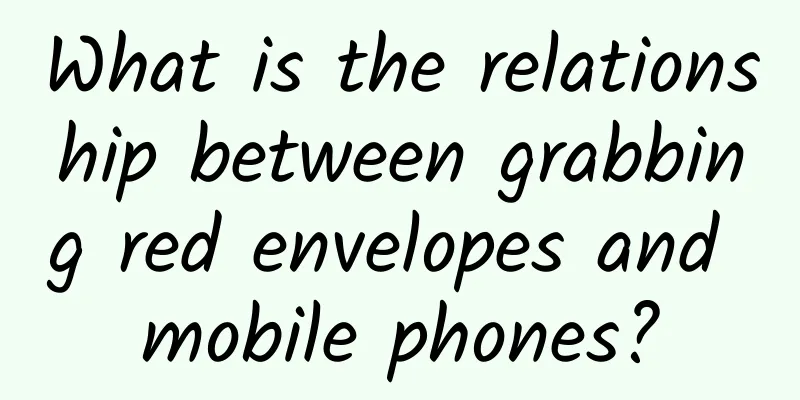Why is the omni-channel model the inevitable choice for mobile communications retail in the 5G era?

|
On November 18, 1987, Guangzhou Mobile Phone Bureau sold China's first "big brother" mobile phone. More than 30 years have passed, and the "big brother" has become a nostalgic collection, and the "telephone bureau" has become a pure historical title. Only the mobile phone sales channel that started with this still exists, but things have changed.
From 2G, 3G, 4G to today's 5G, communication technology is constantly changing, and the channels that dominate mobile phone sales are also keeping pace with the times. From the telephone bureau in the era when post and telecommunications were not separated, to the flourishing chain stores in the 2G era, to the channels dominated by operators in the 3G era, to the comprehensive model of "e-commerce + sinking market + manufacturer's exclusive store" in the 4G era, every upgrade of the network and application scenarios will give rise to the transformation of channels. So, with the advent of the 5G era, who will become the "back wave" of channels? The "back wave" of the great eraLooking back at the development of China's mobile phone market, whenever there is a major turning point in the industry, channels that adhere to the law of "survival of the fittest" will make adjustments accordingly to achieve a rapid replacement of old and new business models and old and new forces. In 1997, retail formats such as brand stores, counters, and operator business halls ended the monopoly of telephone bureaus; from 2000 to 2008, the sales model of mobile phone chain stores with scale advantages quickly took the leading position; in 2009, with the opportunity of 3G licensing, operators quickly rose to dominate the channel; three years later, due to the rapid popularization of 4G, the demand for smart terminals surged, the rapid growth of Internet brands and the huge success of offline brands in the low-tier market "surrounding the city with the countryside" strategy, the industry was quickly reshuffled, and the market entered a new era of e-commerce and channel dance... Now, with the implementation of 5G and the advancement of mobile phone consumption habits, mobile communication retail channels seem to have once again reached a crossroads of choice: "glorious isolation" or "joint creation"? On the one hand, in the context of consumption upgrading, consumers have put forward more diversified demands for product purchasing experience, and the shortcomings of the single online model in user experience can no longer be made up. On the other hand, retailers are eager to achieve breakthroughs in their business models and make full use of the "second battlefield" opened up online to gain more customers and improve their own business efficiency. Brands also hope to expand channels efficiently at an acceptable cost based on the existing specialty stores and direct stores, occupy new retail positions, and get closer to consumers... Obviously, a single force or a single channel is no longer able to support the beautiful dreams of today's market stakeholders. The innovative model of online and offline integration has become the only way forward. With more scenarios, more categories, more channels and O2O integration as its mark, the era of omni-channel mobile communication retail is here! 2. New decentralized modelThe omni-channel model is different from any previous model. It is significantly inclusive and features coexistence and win-win for multiple business formats. Therefore, it has a strong appeal to all parties in the industrial chain. It is different from any channel iteration in the history of mobile phone retail, and it is not strongly exclusive. On the contrary, it is a decentralized, aggregated business model that is jointly promoted by all parties and has significant inclusiveness. The market players of the previous era - e-commerce, sinking markets, and manufacturer stores - can all find their own place in the new omni-channel era. However, if you want to catch up with the times, you need to make sincere efforts. For the brand, this kind of effort means that for the first time, channels other than brand stores need to be treated equally, including priority distribution of new product samples, support for online and offline brand activities, and other details. In the past, these were luxuries that small and medium-sized retailers in various places dared not even think about. For retailers, it means a complete transformation and upgrade of software and hardware from stores to business models, transforming from a simple offline retail store into an interactive node in a huge omni-channel marketing network, shouldering the responsibilities of offline user experience, product delivery and fulfillment, and face-to-face customer service, while gaining resource support from upstream traffic and marketing activities. For e-commerce, in the omni-channel model, the responsibility seems to be even greater. As a national platform, it must shoulder the responsibility of O2O networking, and establish a huge online traffic platform for brands and stores. It must also complete the exploration of topics such as online and offline traffic integration, user integration, and supply chain integration, and lead channel partners to complete the digital transformation together. 3. Using the city as a mirror to witness the rise of the new eraIn recent years, consumers have discovered that the novel "JD Home" has quietly appeared around them. Many long-standing mobile phone retail brands that have been with them for many years have transformed into highly recognizable "JD Home" overnight. It is not only easier to encounter JD Home in shopping malls, core business districts, and large communities in big cities. In fourth- and fifth-tier towns, the red storefronts of JD stores have also become a beautiful landscape on the main streets of county towns. The unified image, unified service model, unified channels and prices make consumers sigh that JD is right next to them. This is a shopping experience different from any previous era. For the hot-selling new products that were originally in short supply, consumers can get a real experience of what they see is what they get at JD Home at the first time of its launch. The long wait for online shopping has been replaced by the "hourly delivery" efficiency that is comparable to ordering takeout. Whenever JD.com holds an event, watching JD.com's online live broadcast, you will find that the little brother in front of the camera is the manager of the JD Home store nearby. Now, although there are different opinions on the omni-channel model, at least in the eyes of consumers, this sales model that takes into account the advantages of both online and offline shopping models while fully making up for the shortcomings almost meets all their expectations for price, experience, service and efficiency. The retailers and brand partners who have joined the model are also impressed by this model, as the customer acquisition problems that have plagued stores have been solved; with ShoppingMall, the once difficult store entry negotiations have become unexpectedly smooth; and mobile phone brands have discovered that in addition to building directly-operated stores, there are other options for penetrating the market more quickly and easily. Throughout history, the iteration of retail formats has always been that new models with lower costs, higher efficiency and better user experience have replaced old models. JD Home's innovative new format of online and offline integration has not only achieved comprehensive coverage of different levels of the market, but also facilitated win-win cooperation with brands and retailers. It can be foreseen that the participants of the JD Home model will continue to work together around the three core goals of "cost, efficiency and user experience" in the future, and continue to set off a wave of innovation in the turbulent era. |
Recommend
A new AI operating system is emerging, and Android may withdraw from China in the future
At present, many domestic mobile phone brands cla...
"Superkids Season 1" Baidu Cloud Download Link Address
Welcome to Aixue Knowledge Network, where you can...
Where are the entertainment venues in Yuhua District, Changsha?
Content: Changsha Tea Tasting Studio reservation ...
Marketing promotion: from short videos to selling products through live streaming!
Against the backdrop of the live streaming craze,...
How should an operator plan an inventory H5?
The day before yesterday, the WeChat report was f...
JD X Robotics Challenge Concludes, BUPT Team's Intelligent Robot Wins the Championship
On March 25, as the Water Drop Team of Beijing Un...
What are the operating routines of B-side products?
It is widely circulated both among the public and...
Uncle Dog Thinking·Institutional Gold Mining Training Camp
Brief introduction of Dog Uncle Thinking and Inst...
Operation and Promotion | Teach you step by step how to capture fans with an event!
How to attract fans to a public account by planni...
How to optimize Weibo advertising creativity? Analysis of 2 advertising cases
This article shares two Weibo advertising optimiz...
6 ways to ignite Spring Festival marketing!
New Year’s Day begins and the Spring Festival is ...
What information is needed to register a mini program? What information is needed to apply for a mini program?
Q: What information is needed to register the min...
Will deleting works on TikTok limit traffic?
When operating a Douyin account, you certainly ho...
How much does it cost to rent a large online game server?
How much does a large online game server cost? Ma...
Crashing Google Chrome? Just 16 bytes!
In recent years, the fast and easy-to-use Google ...









